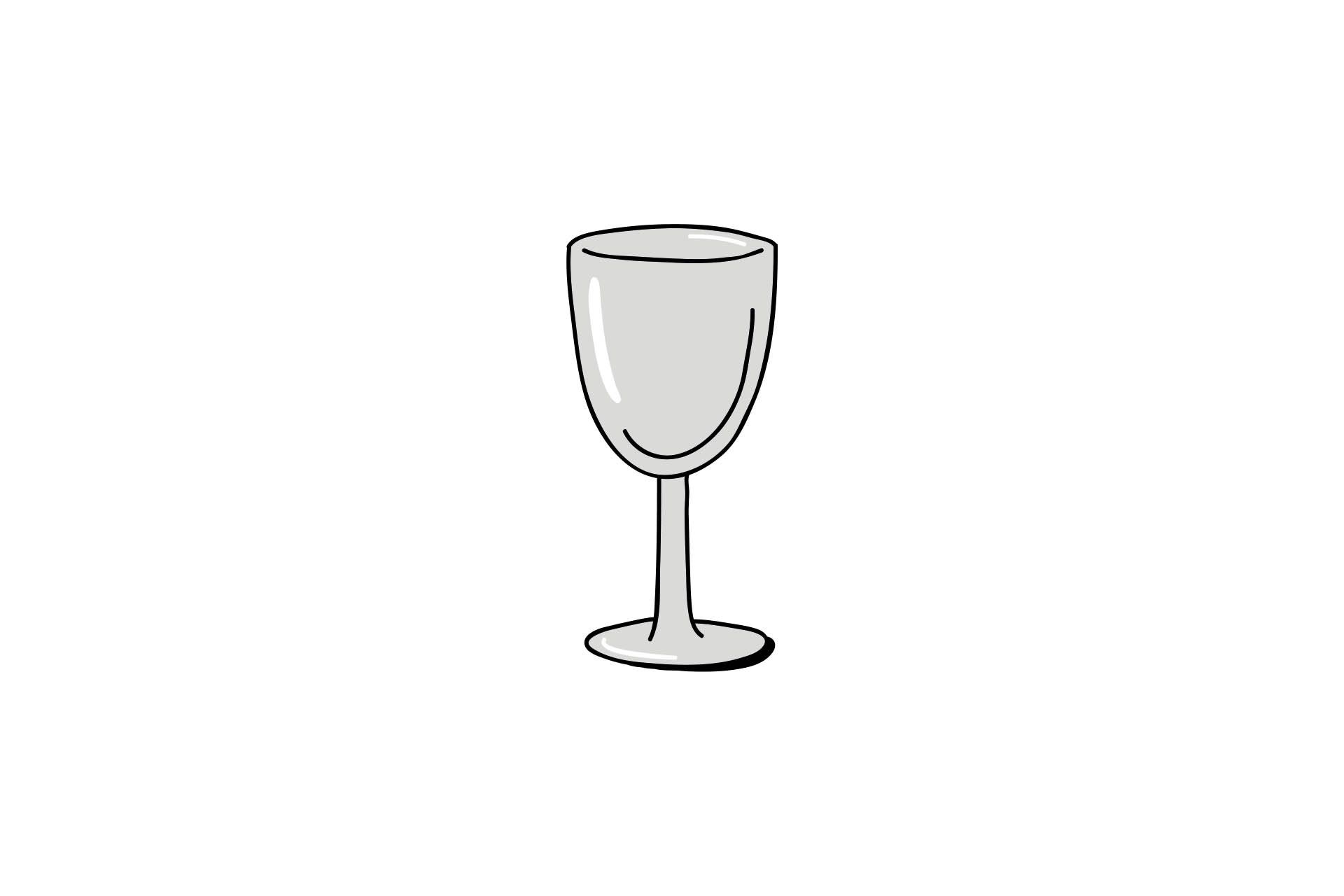Talk of “appropriate” glassware for different types of alcoholic beverages tends to get lively quickly. While there are some practical reasons for different cocktail glasses, others are often simply tied to tradition. All bring out strong opinions among bartenders and customers alike.
Here’s your quick guide to styles of glassware you’ll find in bars, what they should be used for, and a few completely objective assessments of their utility.
A note: This guide is meant to encompass common glassware in bars, rather than the expansive world of wine stemware, which has its own extensive sub-categories. Read more on those here.

Coupe/Coupette: Despite popular legend, these glasses were not modeled off the shape of Marie Antoinette’s left breast (their use predates the late queen). Also occasionally referred to as “Champagne saucers,” these were commonly used to drink sparkling wine in the past, before people noticed the extra exposure to air made their bubbly go flat faster.
Coupes have resurged in cocktail bars in recent years as an alternative to V-shaped martini glasses—and are marginally less likely to slosh contents into laps. Used for drinks served up, or chilled and without ice, that don’t have a sparkling component. Still quite annoying when the bartender fills completely to the brim, necessitating the lean-forward-and-sip-off-the-bar-without-touching technique.
Double rocks: Despite the name, these glasses tend to be about two ounces larger than standard rocks glasses, not twice the size. “Double” is meant to imply room to accommodate a double pour, not double the entire volume of the glass.

Flute: Narrow, stemmed and tapered, this glass reduces surface area to keep drinks with carbonation bubbling longer. Used for sparkling wine, obviously, but also any cocktail with a sparkling element that would be served up, or without ice.
Glencairn: Developed by Glencairn Crystal Studio, this glass is intended for whiskey. Its tapered mouth is said to help with the perception of aroma and alcohol, while the rounded bowl allows for evaluation of a spirit’s color. It is growing in popularity as an option for neat pours of all types.

Highball/Collins: We’re combining these, though there are technical differences. Both are narrow, tall, straight-sided glasses. Collins glasses are meant to be slightly taller and narrower, but in practice, bars tend to use these interchangeably, as do many glassware manufacturers and retailers.
Ranging from about 8–12 ounces, these are traditionally used for drinks that include both ice and a carbonated element, like sparkling wine or soda. Their narrowness, in comparison to rocks glasses, is meant to retain bubbles by reducing the surface area of the drink, while being wide enough (in comparison to a flute) to allow for ice.
Lowball: See “rocks.”

Martini: While the term is applied to several styles of glassware, here, we’re talking about the iconic, V-shaped martini glass. Introduced in 1925 at the Paris Exhibition as an Art Deco interpretation of the coupe glass, it was originally intended for Champagne. Objectively one of the worst glasses ever created, its shape ensures any wrong move will result in a person wearing their drink, and the high center of gravity makes it very easy to knock over when gesturing passionately while telling an interesting bar story. And yet, it is infuriatingly still in use.
Mule Cup/Julep Cup/Copper Mug: Though they vary in style and design, the main component of these cups generally destined for mint juleps and mules is their material, which is metal rather than glass. Many people mistakenly believe this keeps their drink cold longer, but ironically, the opposite is true. Copper conducts heat very well. If a drink in a copper cup feels colder to the touch, it’s actually because it’s absorbing heat from your hands at a higher rate than glass. This makes cold drinks in metal cups purely ornamental. Drink fast.

Nick & Nora: Named after fictional detective duo Nick and Nora Charles, introduced in Dashiell Hammett’s 1933 novel The Thin Man, the glass is another alternative to martini and coupe glasses for drinks served up and without a sparkling component. Significantly less likely to spill, these are many bartenders’ preferred cocktails glasses.
Old-Fashioned: See “rocks.”
Rocks: These short, squat glasses with wide mouths allow for either standard one-ounce ice cubes, or larger, singular ice cubes that chill a drink with slower melting and dilution. While smaller “neat” glasses do exist, the rocks tumbler is more commonly used as the standard glass for neat pours.
These glasses often have a thick, heavy bottom, which allows ingredients to be muddled safely without worrying about the glass breaking. Their low center of gravity also makes them harder to accidentally knock over when you’re a few drinks in.
Shot: A short, narrow glass usually with enough room for an ounce and a half of alcohol, and little else. For when speed is of the essence.

Snifter: Despite having a stem, these are designed to be cupped in your hand to subtly raise the temperature of brandy or whiskey, theoretically to “open it up.” It’s a dubiously effective practice. Maximilian Riedel, president/CEO of Austrian glassware manufacturer Riedel Crystal, calls it “the worst vessel, not only for Cognac, but for all other beverages.”
Texas-sized: An option for margaritas at some chain restaurants. While no strict definition exists for what constitutes a Texas-sized cocktail, it will typically have an extra one-and-a-half to two ounces of alcohol. There is no shame in ordering these.
Tumbler: Often casually used to reference rocks glasses, the term itself can apply to many different styles of glassware. It just means any glass with a flat bottom, no stem or foot, and no handle.
Wine: If you’re on this site, you probably already know what these are. Wine glasses come in a variety of shapes and sizes, the utility of which is endlessly debated by people who enjoy arguing about that sort of thing.
Last Updated: May 8, 2023















